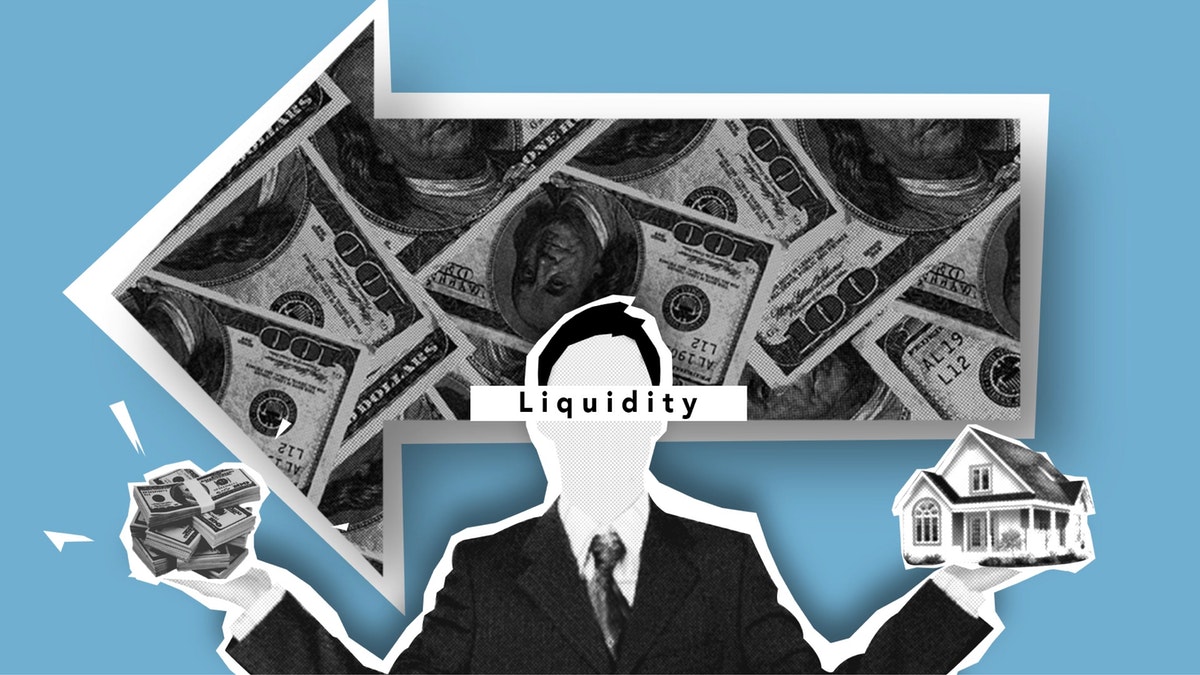Bear markets reflect decline. It is not officially a rule, but generally, a bear represents downward movements of almost anything, like individual stocks and a 20% decrease from its top. It is a crucial investing lingo equates an adverse demand with a bear.
Although, there might be other simplified ways of describing market movements. But words like these have now captured the general sentiment of markets, stocks, industries, and the investors’ feelings of pessimism.
- A bear market occurs when a market’s price decreases for an extended period. It usually refers to a situation where stock values have fallen 20% or more from the recent peak due to widespread pessimism and poor investor sentiment.
- Bear markets can be either cyclical or long-term in nature. The former can persist for a few weeks or months, while the latter can last for extended periods.
- Put options, short selling’s, and inverse ETFs are among the ways investors can profit from falling stock prices during a bear market.
A weak or lagging or sluggish economy, collapsing market bubbles, Diplomatic Crisis, political crises, and significant societal changes in the economy, such as migrating to the internet, are all common causes of bear markets.
Low employment, low discretionary income, poor productivity, and reduced corporate earnings are symptoms of a weak or faltering economy. Furthermore, any government interference can set off a bear market.

1. What is Bear Market?
A decreasing market in securities and exchange trading is known as a bear market. A bear is an investor who believes prices will fall and sells a loaned security or asset in the hopes of repurchasing it at a lower price later, a speculative transaction known as selling short.
- The term bear may come from the idiom “selling the bearskin before catching the bear” or selling when one’s stock is “bare.” Consider the bull market.
- If the supply is more than demand, the market is a bear market. When collection surpasses the order in a free market economy, prices fall.
For instance, in a bear market, sellers represent supply, and purchasers represent demand.
- As a result, whenever the market is bearish, the number of sellers is excellent, but the number of buyers is low.
It’s exceedingly tough to predict whether markets will increase or decrease. How can one tell when something like this is likely to happen? The majority of specialists believe it is impossible.
Understanding how the market is shaped, on the other hand, can be beneficial.
We know that three events trigger a bear market:
- A sharp increase in inflation.
- High unemployment rates.
- When the economy is about to face a downturn.
Psychological variables, such as our herd instinct, also play a role. For example, some investors may follow suit if many other investors are selling. Then, as word gets out, the first and second groups of investors are selling, others follow suit, and so on.
How can you minimize your risk when the market is in a bear market? One option is selling all of your stocks and investing in short-term government bonds. Put another way, dispose of your securities assets and look for safer alternatives.
Nonetheless, it is possible to maintain stock market investment during a bear market.
- Any asset class can experience bear markets. A bear market in stocks is often measured by an index such as the Dow, S&P 500, or NASDAQ Composite.
- Bonds such as US Treasuries, municipal bonds, and corporate bonds can all experience a bear market.
- Bear markets exist in currencies, metals, and commodities such as oil.
A loss of investment, business, and consumer sentiment is the most common cause of a bear market. It is how it usually goes down.

2. What is Bear Market Rally?
A rally is a period in which stocks, indices, or bonds rise.
A bear market rally happens when the stock market posts gain for weeks or days. It may easily scam many investors into thinking that the stock market trend has overturned and a new bull market has started.
However, the stock market never follows a straight line or is clean. But these rallies amount to blips in an otherwise downward trend. A bear market might experience days/months of upward momentum. But it will still be a bear market until it moves up 20% or more.
- Rallies happen for a variety of reasons. Short-term rallies are triggered by news or events that disrupt the demand-supply equilibrium, such as the appointment of a new CEO.
Long-term rallies can occur due to changes in macroeconomic fundamentals, such as announcements of key interest rates and fiscal policy adjustments.
Bad market rallies are during a bear market once investments gain value quickly in the near term, over days or weeks, before falling to new lows. Bear market rallies aren’t indicative of the end of the bear market or the stabilization of asset values.
Though long-term investors should avoid trading bear rallies or buying equities as they rise in value, traders may be able to profit by selling assets as they grow in value and purchasing them as they fall.
Even for experienced traders, spotting a bear market rally can indeed be difficult. In many circumstances, a bear market rebound can endure weeks or months in the middle of a longer-term declining trajectory.
- A bear market rally is defined as a gain of 5% or more throughout a bear market, accompanied by a subsequent, prolonged downward slump.
Bear markets can be emotionally draining since they endure for such extended periods.
Bear markets can be emotionally draining for investors expecting a market reversal because they linger for so long. Market experts advise investors to avoid emotional reactions to market volatility since they may panic and make mistakes with their investments.

3. What is Secular Bear Market?
A secular trend is usually a longer-term pattern, while a cyclical trend indicates market momentum in the short term.
- Long-term trends drive a secular bear market, which lasts longer, unlike the short-term sentiment.
Analysts often wonder whether the bear is secular or cyclical whenever the market displays bearish qualities. Until the market is in the midst of one of these shifts, there can be no clear answer.
- A secular bear market resembles an irregular pattern, with abrupt upward and negative moves that eventually lead to lower price levels.
In an economically challenging climate, a period characterized by increased volatility repeated cyclical rallies and retreats. The most noticeable trait is that investors become increasingly unwilling to pay as much for share earnings.
Secular bear markets can give fantastic investment opportunities since businesses and equities will be worth far less than they would be in a bull market—and the past has shown us that the market will eventually recover.
- Some investors have successfully bought equities at lower prices throughout the bear market and afterward sit on them.
During a secular downturn market, investors prefer to avoid riskier assets. They will minimize their stock holdings, choosing to invest in U.S. Treasury and corporate bonds, renowned for performing well during market downturns.
During secular down markets and downturns, precious metals are another favorite of investors. During this market occurrence, several of these metals retain their value.
- Derivatives could be used to engage in metals without having to own them. You can also trade in actual gold, but this necessitates the purchase of storage facilities, which can be costly.

4. What are the Rules of Bear Market?
No specific or perfectly calculated rulebook determines a bear market. The most commonly used measurement of the bear market is the 20% rule. However, there are few generally accepted quantitative definitions.
- It means a 20% drop for markets from a high point.
That means you’ve got to look back on a stock or markets’ historical price changes to determine if it’s in bull or bear mode. To start, you have to identify the stock or the market’s low point and then find the percentage change — if it’s above 20%, then that period is a bull market.
If you identify the market’s high point and then look at its percentage change declined from over 20%, then it’s a bear market period.
The Three-Month Rule states that you should wait three months after you believe a peak has occurred before declaring a bear market. Instead of predicting when a market top would happen, this rule assures that one has already happened before taking defensive investing action.
- It gives you a window of opportunity to evaluate fundamental investing data, market action, and potential bear market drivers.
The 18-Month Rule: If you’re going to engage in a defensive investment plan, you shouldn’t expect it to endure that long. If you stay pessimistic for more than 18 months, then risk missing out on the lift market surge that marks the start of the next bull market.
- The more a bear market lasts, the more likely you will re-invest too late. While 20% is the cutoff, bear markets frequently fall much further than that over time, rather than all at once. Despite a few “relief rallies” here and there, the market is still trending downward.
- Investors eventually begin to identify reasonably priced equities and start buying, bringing the bear market to a close.
Investors’ pessimism and lack of confidence characterize bear markets.
- Investors appear to disregard any positive news in a bear market and continue selling aggressively, driving prices further lower.
While investors may be pessimistic about a single stock, this may not generally impact the market world. However, when the market goes bearish, practically all equities inside it begin to fall, even if they are providing good news and expanding earnings individually.

5. Causes of Bear Market?
- These markets reflect how stocks move in general, up or down. Hence, whatever affects stocks also affects whether it is a bear market or another one. Here are a few joint market-moving forces that can cause bear markets:
Employment: Tends to be lower in a bear market as organizations let go of their workers to cut costs.
Rate of Interest: The Federal Reserve keeps borrowing rates low to give markets a push, or they may increase speeds for making borrowing money more expensive, which can render the economy slow.
International Investment: An increase in foreign investment or demand for goods from a foreign country can grow. But a reduction in investment from another country may hurt businesses and affect their stocks.
Confidence level: The investor’s enthusiasm drives market movements; it is the critical driver for selling and buying stocks. Investors think the economy is moving in the right or wrong direction based on if they have money or not. Then they do the thing that can strengthen that trend.
- Bear and other markets are the emojis of investing because they turn investors emotionally. An investor believes bear markets happen! And there’s this ongoing back-and-forth, balancing, a cycle of bear periods.
It would help if you understood markets reflect negative and positive trends. They are the key to navigating your way through the stock market.

6. How to Invest in Bear Market?
Bear markets are scary times for investors. Nobody likes watching the value of their portfolios hit the ground. It Can also be an opportunity to invest money to work long while trading stocks at a discount.
- However, these are some rules for investing; never make a knee-jerk reaction to market movements. Over the long run, the average investor considerably underperforms the overall stock market.
The main reason for this is rapidly moving in and out of stock positions. When stocks sink and seem as if they’ll keep falling forever, our first instinct is to sell them before it gets any worse.
- The primary goal of investing is to sell high and buy low, but you’re doing the opposite by reacting emotionally to every market swing.
Begin investing in stocks for the long run, and don’t trade them simply because their prices dipped in the bear market.
Focus on quality: Indeed, companies often go out of business when bear markets hit. It is commonly said that companies that don’t have any real competitive advantages tend to get hit the hardest when the economy goes bad.
- On the other hand, high-quality companies tend to outperform. It’s essential to focus on strong balance sheets and durable competitive advantages during uncertain times.
Don’t catch the bottom: You will lose the battle by the market. Remember, you aren’t investing at the base during bear markets. Buy stocks even if the share price goes down further after you buy because you want to own the business for the long term.
Build positions gradually: Build your stock positions slowly during a bear market. Do it even if prices are at an all-time low, instead of throwing all your money in at once and trying to time the bottom.
- This way, you’ll be able to take advantage of the new lower prices instead of sitting on the sidelines, even when you’re wrong, and the stock continues to fall.
7. Conclusion:
It can be easy to sell and wait for asset values to rise again when the market falls. However, this can lead to expensive errors. You run the danger of sealing in an irreversible loss of capital if you sell whenever the market has dropped sharply.
- By spending a set amount of money at regular times, regardless of the market conditions, you’ll be able to buy equities at lower prices and maybe watch the shares appreciate as once the market recovers.
Seek professional help if you feel like your thoughts are getting the best of you. An advisor can assist you in examining your financial strategy and provide investment advice that can help you mitigate the impact of a financial crisis.
free budgeting app best free budgeting app budgeting app best free budgeting apps budgeting app free money management app manage money app family budget app personal finance tracker track personal finances budgeting app for couples





 Our users have reported an average of $5K+ positive impact on their personal finances
Our users have reported an average of $5K+ positive impact on their personal finances
